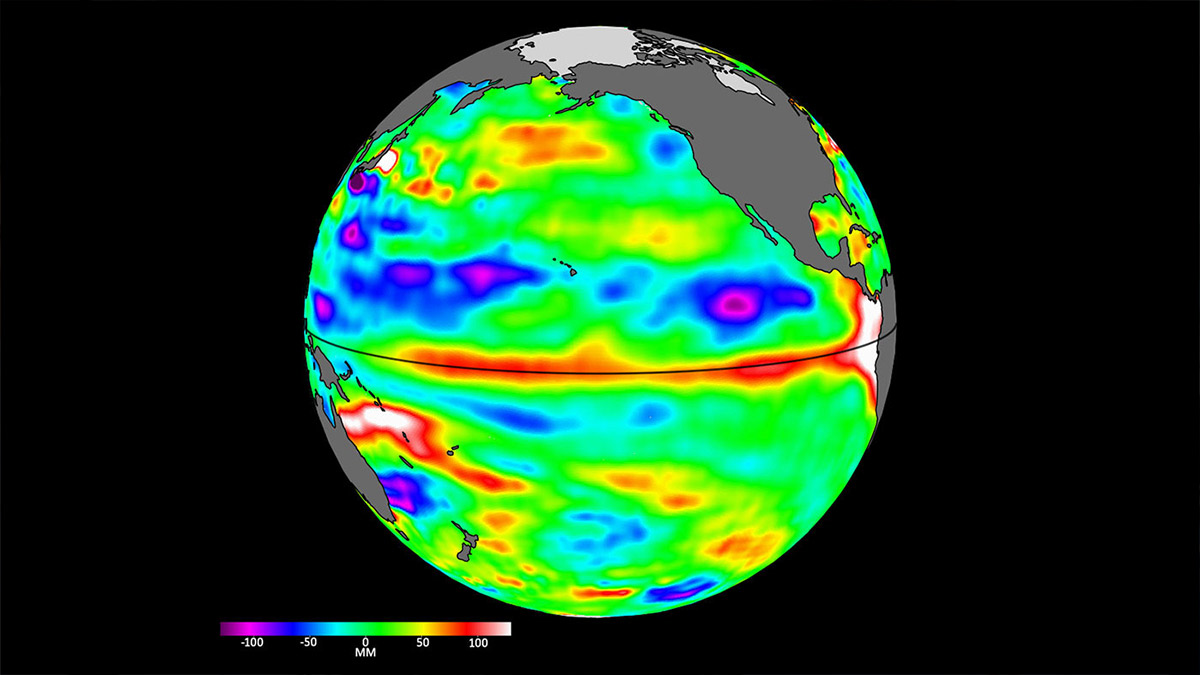
the National Aeronautics and Space Administration (NASA) detected from space The first signs of what will be El Niño phenomenon“ This is the year 2023 in the tropical Pacific.
The latest data from the US-European Sentinel-6 Michael Freilich satellite sea levelKelvin waves approximately 5 to 10 centimeters high appear at the ocean surface and hundreds of miles wide, moving west to east along the equator toward the western coast of South America.
According to NASA; When they form at the equator, kelvin waves bring in warm water, which is associated with rising sea levels From the western Pacific to the eastern Pacific, the series of Kelvin waves in the spring are well known El Niño signIt is a periodic weather phenomenon that can affect weather patterns around the world, It is characterized by sea level rise and higher-than-average ocean temperatures along the western coasts of the Americas.
during the presence of the “El Niño” phenomenonAnd Water expands as it warms, so sea levels tend to rise in places with warmer waters. El Niño is also associated with the weakening of the trade winds.
This condition can lead to cooler, wetter conditions to the southwestern United States and drier conditions to western Pacific nations such as Indonesia and Australia.
Both the US National Oceanic and Atmospheric Administration (NOAA) and the World Meteorological Organization recently reported Greater chance of “El Nino” phenomenon in late summer. Continuous monitoring of ocean conditions in the Pacific Ocean by instruments and satellites such as Sentinel-6 Michael Freilich should help indicate just how strong it will be in the months ahead.
“We’ll watch this ‘boy’ “Like a hawk,” said Josh Willis, Sentinel-6 project scientist Michael Freilich at NASA’s Jet Propulsion Laboratory in Southern California. “If it were large, the globe would experience a record warming spike, but here in the southwestern United States we could be looking at another wet winter, right after the soaking we experienced last winter.”
This type of vision allows for a pot Knowing not only the shape and height of the water, but also its movement, said Nadja Vinogradova-Schieffer, NASA program scientist and director of Michael Sentinel-6, noting that “ocean waves dump heat around the planet, bringing more heat and moisture to our coasts and changing our climate.” .




